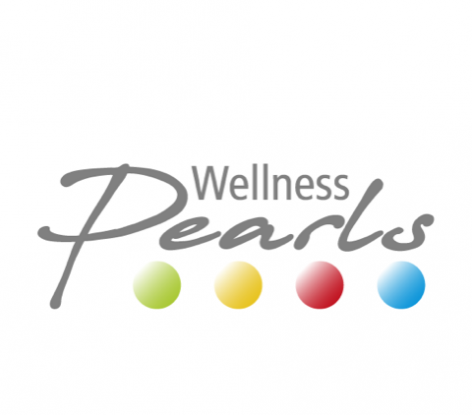Wellness dictionary
Little ABC for your spa-break questions ...
In their treatment discriptions, wellness hotels often use technical terms, which are hard to understand for potential guests. We have therefore collected and defined the most relevant terms in our small wellness ABC. A tip: Our wellness dictionary also supports word requests. You don't need to know the exact wording.
Select letters or search term:
High Tech Beauty
High-tech-beauty is a further development of classic cosmetics
and a gentler treatment method than often invasive cosmetic operations. The burden on the body is much less, but the effect is immediately visible and long-lasting. The aim of high tech beauty tools is to positively influence the skin's regeneration processes by introducing highly concentrated active ingredients, to stimulate the metabolic processes and thus to slow down the aging process of the skin. Many of the devices used in high-tech-beauty originally come from the medical field.
So-called cosmeceuticals are used in high tech beauty.
These are skin care products with a much higher concentration of active ingredients than conventional cosmetic products. The name comes from the English terms "cosmetics" and "pharmaceuticals" and was first used by the American dermatologist Prof. Albert Kligman. So cosmeceuticals are high-quality cosmetic products, the effectiveness of which has been proven in scientific studies and product tests.
What is ultrasound?
One of the best known treatment methods in high tech beauty is ultrasound. The ultrasound treatment is carried out with a special ultrasound device that generates fine high frequencies that are not audible to the human ear. Due to these fine vibrations of the ultrasound device, heat is generated in the deeper layers of the skin, the cells vibrate and the blood flow is intense. The warmth and the massage effect activate the metabolism, the lymphatic fluid can drain better, while the formation of elastin and collagen is stimulated. Sound waves can also very well transport active ingredients in the deeper layers of the skin, so that the effect of the injected preparations is enhanced.
The possible uses for ultrasound treatments in high-tech-beauty range from
- tired and stressed skin over
- blemishes and
- couperose, right down to the treatment of
- first wrinkles and
- Pigment spots.
What is the difference between a classic ultrasound treatment and HIFU?
Applications:
-
Reduction of wrinkle depth
-
Throat lift
-
Reduction of bags under the eyes
-
Lifting frown lines and forehead lines
-
Double chin reduction
What is microdermabrasion?
In the case of microdermabrasion, the top layers of skin are mechanically removed with the help of the smallest crystals (aluminum oxide, salt, microfine sand or diamond). The crystals are blasted onto the skin at high speed and at the same time vacuumed off again. This is followed by regenerative skin care. Microdermabrasion makes the skin more elastic, the pores become finer, the depth of wrinkles is reduced and the absorption of active ingredients in the skin is optimized. The contours are also tightened and the skin's own production of elastin and collagen is stimulated. The complexion looks tighter and fresher.
What is microneedling?
Microdneedling is also a non-surgical method of treatment for skin problems. Here, a roller-shaped derma roller is passed over the skin, which is equipped with small needles. The needles penetrate the top layer of skin (epidermis) and cause the smallest of injuries. The cells react to this artificial injury with increasing blood flow to the skin, the renewal of cells and the formation of collagen, elastin and hyaluronic acid. Collagen strengthens the structure of the connective tissue, elastin keeps the skin elastic and hyaluronic acid provides it with moisture and nutrients. Skin problems like
- Wrinkles
- Pigment spots
- Stretch marks
- Stretch marks and
- Acne scars
should be alleviated or even disappeared after just a few sessions due to microneedling. In addition, microneedling makes the skin more receptive to the effects of care and anti-aging products.
What is mesoporation?
Fast electrical impulses create a voltage field, which opens tiny channels in the skin for fractions of a second. Through these channels, highly effective anti-aging agents can be evenly introduced into the underlying tissue. The depth of penetration extends to the fourth and fifth layers of the epidermis or the beginning of the dermis layer. This increases the effectiveness many times over. The complexion looks firmer and fresher and the first wrinkles are reduced. In contrast to mesotherapy, mesoporation is gentler because no injuries are inflicted on the skin. There was a Nobel Prize in chemistry for this technique.
What is mesotherapy?
Mesotherapy was developed by the French doctor Michel Pistor (1924-2003). With this treatment method, individually composed active ingredients are injected with fine, short needles only into the area to be treated. The organism is not burdened by this. A skin depot is created that gradually releases its active ingredients. The ingredients mostly have a natural basis and can be, for example, minerals, vitamins or homeopathic and herbal substances. The stitches, which are only a few millimeters deep, stimulate the tissue, stimulate blood circulation and increase the oxygen supply to the skin. Mesotherapy is said to smooth wrinkles and alleviate cellulite and stretch marks.
What is radio frequency?
Radiofrequency high tech beauty treatment is also a non-invasive procedure, in which the connective tissue fibers contract in the deeper layers of the skin as a result of the heating, thus causing an immediately visible tightening of the tissue. The radiofrequency treatment also stimulates the formation of new collagen. The result is a visible improvement in the complexion and a noticeably smoother skin.
What is galvanotherm treatment?
Another treatment method in the field of high tech beauty is the galvanotherm process. The effect of the galvanic current is based on the migration of ions, electrically charged ponds, which naturally occur in every body. Galvanic current is usually used with two electrodes, one electrode is the positive pole, the other electrode is the negative pole. The electrical voltage causes an ion migration in the body, whereby hydrochloric acid forms under the positive pole and sodium hydroxide solution forms under the negative pole. The body reacts to the change in the chemical environment by increasing the blood flow to the treated skin area.
What is a cryo application?
Cryo-therapy in high tech beauty means the therapeutic use of cold. With this treatment method, nitrogen is sprayed onto the area to be treated with a small glass syringe. The tissue dies due to the icing and is rejected within a few days.
Applications with cold should have the following effects:
- Removal of pigment and age spots
- Stretch marks removal
- Smoothing the skin surface.
What are IPL and laser applications?
The currently most common methods for permanent hair removal in high tech beauty are IPL (Intense Pulsed Light) and laser. Both treatment methods work similarly. Both IPL and lasers generate thermal energy in which light is converted. However, multiple light spectra are used in the IPL. This allows a larger area to be treated. The IPL uses a flash lamp that generates the heat necessary to desolate the hair roots. After three to twenty days, the hair should fall out. When lasering, only one wavelength of light is emitted.
The difference between the two treatment methods is that the laser beams can be directed at the hair roots. The surrounding skin areas are also heated during IPL. In addition, a laser beam penetrates much deeper into the skin. Laser devices are only used in medical facilities and medical practices. IPL devices may also be used in cosmetic institutes.
Related topics: AHA alpha hydroxy acid Hyaluronic acid HydraFacial Micro Needling Microdermabrasion Ultrasound treatment
Wilfried Dreckmann combines practical experience in the field of wellness and spa with academic know-how. Since 2006 he is working internationally as a management consultant, trainer and coach for wellness providers. He is a lecturer at the iST Studieninstitut and associate professor at the iST University of applied sciences in Düsseldorf.


